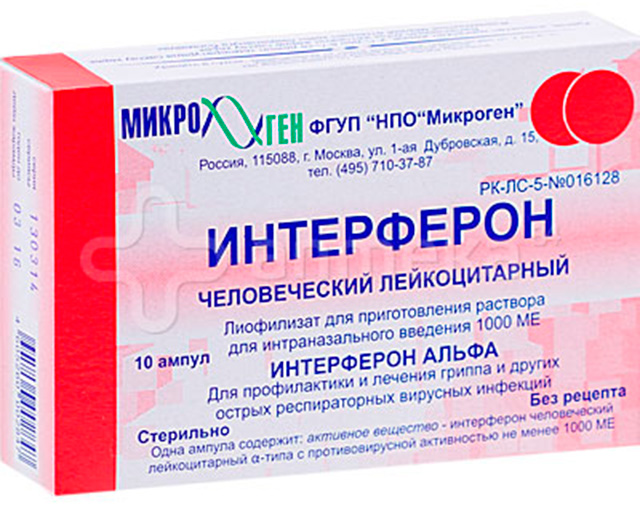The Epstein-Barr virus is named after its discoverers, English doctors Epstein and Barr, who discovered it in 1964. The infection caused by the Epstein-Barr virus is called infectious mononucleosis. In young children, infection with this virus is often not noticed, since it proceeds quite easily, however, at an older age, the virus leads to a typical picture of infectious mononucleosis, which literally “knocks down” the patient. This disease can occur at any age, but most often it occurs in children aged 4 to 15 years.
Epstein-Barr virus in children: symptoms
The incubation period lasts from 4 to 8 weeks. It starts with symptoms typical of viral infections. Weakness, joint pain, headache, loss of appetite, chills are manifested. After 2-3 days, severe pharyngitis develops, which can last a week, the temperature rises to 39-40 ° C, the child's lymph nodes increase. Some children complain of abdominal pain, which is associated with an enlarged liver and spleen. A certain number of patients develop a rash similar to that of scarlet fever.
Usually the symptoms last for about two weeks, but weakness and general intoxication of the body can last for several months.
Epstein-Barr virus treatment in children
- With this disease, bed rest is indicated, a minimum of physical activity.
- Treatment is symptomatic as in viral diseases.
- It is advisable to consume as much warm liquid as possible. The baby's food should be low-calorie and easily digestible. High temperature should be reduced with an antipyretic paracetamol based, suitable for age.
- Even after the acute phase of the disease has passed, after infection with the Epstein-Barr virus, it is necessary to keep the child from physical activity for at least four weeks.
How dangerous is the Epstein-Barr virus?
Serious complications are rare, but you should be aware of them. A secondary bacterial complication is possible, as well as damage to the central nervous system. In the blood, a decrease in the number of blood elements such as erythrocytes, leukocytes, and platelets can be detected. As a result of the destruction of red blood cells by antibodies, anemia can develop.
A very rare, but also life-threatening complication is a ruptured spleen.
Epstein-Barr virus: consequences

The prognosis for children with Epstein-Barr virus is positive. Acute symptoms resolve within 2-3 weeks. Only in 3% of patients this period is longer.
At the same time, weakness and painful condition can last from one to several months.
Epstein-Barr virus prevention
Unfortunately, there are no special measures that will allow you and your child to prevent infection with the Epstein-Barr virus. However, the less often you visit public places, places of large congestion of people, the more likely it is that this disease will bypass your home. Remember that the virus is transmitted by airborne droplets when the carrier of the disease sneezes or coughs, as well as through kissing.
The Epstein-Barr virus belongs to the herpesvirus family. It can infect B cells (B lymphocytes) and epithelial cells.
EBV is most commonly transmitted through body fluids, especially saliva. In addition, this virus can spread through blood and semen during sexual intercourse, blood transfusions and organ transplants.
EBV can be spread through personal items such as toothbrushes or glasses that have been previously shared by infected people.
The virus remains alive on objects, at least until it is completely dry.
After entering the human body, the virus can be transmitted to other people even before the development of symptoms of the disease.
After infection, EBV remains in the body in an inactive form for the rest of your life.
Diagnostics
The detection of infection with the Epstein-Barr virus is based on laboratory methods that determine antibodies to it:
- IgM to the capsid antigen - appear at the beginning of infection and, as a rule, disappear within 4-6 weeks.
- IgG to the capsid antigen - appear in the acute stage of EBV infection, their highest levels are observed 2-4 weeks after infection, after which they slightly decrease and persist for the rest of a person's life.
- IgG to early antigens - appear in the acute stage of the disease and decrease to undetectable levels after 3-6 months. In many people, the detection of these antibodies is a sign of an active infection. However, about 20% of healthy people may have IgG to early antigens for many years.
- Anti-nuclear antigen antibodies are not detected in the acute phase of EBV infection, but their level slowly rises 2-4 months after the onset of symptoms. They persist for the rest of a person's life.
Generally, EBV antibodies are not needed to diagnose infectious mononucleosis, the most common form of EBV infection. However, these specific tests may be needed to identify the cause of the disease in people who do not have typical symptoms or in patients with other diseases that may be caused by EBV.
Interpretation of the results of the determination of antibodies to EBV provides information on:
- Susceptibility to infection. People are considered susceptible to EBV infection if they do not have antibodies to the virus' capsid antigen.
- Primary (new or recent) infection. People are considered to have primary EBV infection if they have IgM to the capsid antigen and no antibodies to the core antigen. Also, the detection of high or rising levels of IgG to the capsid antigen and the absence of antibodies to the core antigen of the virus 4 weeks after the onset of the disease indicate the primary infection.
- Transferred in the past infection. The simultaneous presence of antibodies to capsid and nuclear antigens indicates a past infection. Since about 90% of adults are infected with EBV, most of them have antibodies to the virus due to a previous infection.
Another way to confirm EBV infection is to detect virus DNA in blood or saliva using polymerase chain reaction. However, a positive result of this analysis does not indicate an active infectious process, since it can also be observed with a latent form of virus carriage.
Treatment for EBV infection
About 90% of adults worldwide are infected with EBV. However, not every infected person develops symptoms of any disease associated with this virus.
The most common form of EBV infection is infectious mononucleosis, which develops in the acute stage of infection with the virus. Its treatment is non-specific, since there are no antiviral drugs that act on EBV.
Once the virus enters the human body, it remains in it for life, it is impossible to eliminate it. In the vast majority of cases, EBV in the body remains in an inactive or latent form, without causing any symptoms. From time to time, infected people can detect the release of viral particles in saliva, that is, even a clinically healthy person can be contagious.
However, no treatment in such cases is necessary, as it will be completely ineffective.
It is believed that in a few people, EBV infection contributes to the development of other diseases - Burkitt's lymphoma, gastric carcinoma, nasopharyngeal cancer, multiple sclerosis. In these cases, treatment appropriate to each specific case is used, however, none of the recommended treatment regimens contains drugs whose action is directed at EBV.
However, there is another form of disease caused by this virus, chronic active EBV infection. This is a very rare disease in which too many lymphocytes are produced in the body. It is characterized by a significant increase in antibodies to EBV in the blood and the amount of viral RNA in the tissues. Most cases of this disease have been described in Japan.
Criteria for chronic active EBV infection:
- Severe progressive course of the disease for more than 6 months, usually manifested by fever, enlarged lymph nodes and spleen. These symptoms usually appear after a primary EBV infection or are associated with a significant increase in antibodies to the virus or high levels of viral RNA in the blood.
- Infiltration of tissues (lymph nodes, lungs, liver, central nervous system, bone marrow, eyes, skin) by lymphocytes.
- Elevated levels of RNA or proteins of the virus in affected tissues.
- The absence of any other diseases that suppress the immune system.
The most common symptoms and signs of chronic active EBV infection are:
- swollen lymph nodes (observed in 79% of patients)
- enlargement of the spleen (68%),
- fever (47%),
- hepatitis (47%),
- decrease in the number of blood cells (42%),
- liver enlargement (32%),
- interstitial pneumonitis (26%),
- diseases of the central nervous system (21%),
- peripheral neuropathy (21%).
There are various treatment regimens for patients with chronic active EBV infection, including antiviral drugs (acyclovir or valaciclovir), immunoglobulins, interferons, immunosuppressive therapy (corticosteroids, cyclosporine, azathioprine), and the introduction of cytotoxic lymphocytes.
Although some of these regimens may result in temporary improvement in patients' condition, none of them provided a permanent effect.
The only currently known treatment for chronic active EBV infection is allogeneic hematopoietic stem cell transplantation, during which stem cells from a suitable donor are injected into the patient. Without this treatment, the disease almost inevitably leads to the death of the patient, and even allogeneic hematopoietic stem cell transplantation does not guarantee a good prognosis.
Diseases caused by a virus
The Epstein-Barr virus (EBV) is one of the most common viruses that infect humans. Approximately 90% of adults are infected with EBV, most of them do not even know about it.
The most common cause of this virus is infectious mononucleosis, but this does not happen in all people. In addition, there are currently reasonable suspicions that EBV plays a role in the development of certain types of cancer, multiple sclerosis, and many other diseases.
Infectious mononucleosis
Infectious mononucleosis is a very common infectious disease caused by EBV (about 90% of mononucleosis cases) or other viruses (eg, cytomegalovirus).
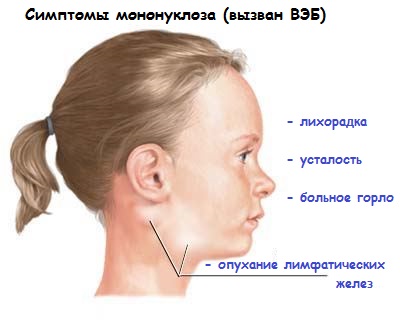
Infectious mononucleosis is not considered a serious illness, but its symptoms can still interfere with a person's daily life for several weeks.
The incubation period (the time from infection with the virus to the development of the clinical picture of the disease) can last 4-6 weeks.
Symptoms of mononucleosis usually last 1-4 weeks, but some patients may take up to 2 months to improve.
The most common symptoms of mononucleosis are fever, sore throat, swollen lymph nodes in the neck, armpits, and groin.
Other symptoms may include:
- Fatigue.
- Muscle pain and weakness.
- White coating on throat.
- Skin rash.
- Headache.
- Loss of appetite.
In addition to these symptoms, about half of patients with infectious mononucleosis have an enlarged spleen.
The most common, but usually mild, complication of mononucleosis is moderate inflammation of the liver -. This form of hepatitis is rarely severe and most often does not require any treatment, it goes away on its own.
Enlargement of the spleen increases the risk of rupture during injury. Severe swelling of the tissues of the throat and tonsils is dangerous for airway obstruction. In rare cases, a peripharyngeal abscess may develop.
Fortunately, the most severe complications of mononucleosis are very rare. These may include destruction of red blood cells (hemolytic anemia), inflammation of the pericardium (pericarditis) and heart muscle (myocarditis), inflammation of the brain (encephalitis). As a rule, infectious mononucleosis occurs more aggressively in immunocompromised people.
Diagnosis of infectious mononucleosis
Diagnosis of infectious mononucleosis is based on the patient's symptoms - fever, sore throat, and swollen lymph nodes. The doctor can conduct blood tests that detect antibodies to EBV, but they are not informative in the first days of the disease.
Can be done and general analysis blood, in which the level of lymphocytes increases during mononucleosis, which indirectly confirms the diagnosis of mononucleosis. Some of these lymphocytes often have an unusual structure when examined under a microscope - these are the so-called mononuclear cells, the presence of which is also characteristic of this disease.
Unfortunately, there are no effective drugs for the treatment of infectious mononucleosis, since antibiotics and antiviral agents do not act on EBV.
Once diagnosed, patients are advised to:
- Get plenty of rest, it is better to adhere to bed rest, especially in the first 1-2 weeks of illness.
- Drink enough liquid.
- Take antipyretic and pain medications to combat fever and muscle pain - ibuprofen, paracetamol.
- To relieve a sore throat, you can use lozenges from it, drink cool drinks, eat frozen desserts (for example, popsicles).
- Also, if you have a sore throat, you need to gargle it with saline solution several times a day. To prepare this solution, dissolve ½ teaspoon of salt in a glass of warm water.
- All strenuous exercise, especially contact sports, should be avoided for at least 4 to 6 weeks after a diagnosis of infectious mononucleosis is made. This helps prevent complications such as a ruptured spleen.
Patients continue to shed viral particles in saliva for up to 18 months after infection. When symptoms last longer than 6 months, the condition is often referred to as chronic mononucleosis.
Most patients with infectious mononucleosis make a full recovery and have no long-term problems. However, some of them may experience fatigue for several months.
Epstein-Barr virus and cancer
Scientists estimate that EBV causes 200,000 cases of cancer worldwide each year, including lymphomas, nasopharyngeal and stomach cancers.
The number of oncological diseases in the world per year associated with EBV
Burkitt's lymphoma is a cancer that affects the human lymphatic system. Its development is closely connected with VEB.
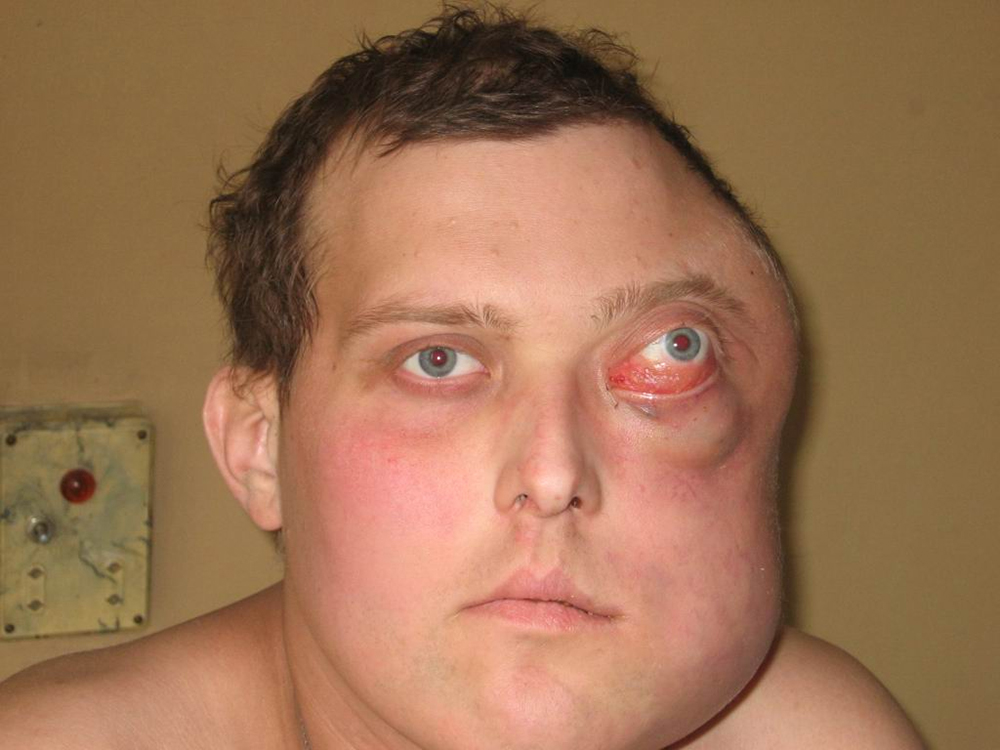
Burkitt's lymphoma is first manifested by an increase in lymph nodes in the neck, groin, or under the armpits. The disease can also begin in the abdomen, ovaries, testicles, brain, and cerebrospinal fluid.
Other symptoms include:
- Temperature rise.
- Increased sweating at night.
- Unexplained weight loss.
For the diagnosis of Burkitt's lymphoma, a bone marrow biopsy, chest x-ray, computed or magnetic resonance imaging of the chest, abdomen and pelvis, a biopsy of the lymph nodes, and a study of cerebrospinal fluid are performed.
Chemotherapy is used to treat this disease.
If it fails, a bone marrow transplant can be performed.
Intensive chemotherapy can cure about half of patients with Burkitt's lymphoma. Cure rates are lower if the cancer has spread to the bone marrow or cerebrospinal fluid.
Gastric carcinoma is a cancer that is the second most common cause of cancer death in the world. Scientists estimate that about 10% of all cases of gastric carcinoma are associated with the Epstein-Barr virus.
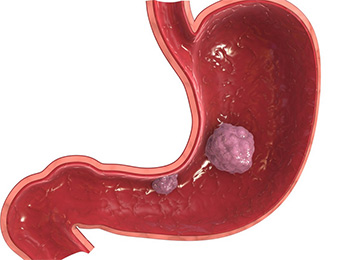
In the early stages, stomach cancer can cause:
- Dyspepsia.
- Bloating of the abdomen after eating.
- heartburn.
- Minor nausea.
- Loss of appetite.
As the disease progresses and the tumor grows, more severe symptoms develop:
- Abdominal pain.
- Blood in stool.
- Vomit.
- Unexplained weight loss.
- Difficulties with swallowing.
- Yellowing of the skin and sclera.
- Constipation or diarrhea.
- General weakness and fatigue.
The diagnosis is established by fibroesophagogastroduodenoscopy with biopsy, computed tomography or radiopaque examination of the stomach.
Surgical methods, chemotherapy, radiation and targeted therapy are used to treat gastric carcinoma.
Nasopharyngeal cancer is a rare form of malignant neoplasm of the neck. According to scientists, there is a strong link between this cancer and the Epstein-Barr virus.
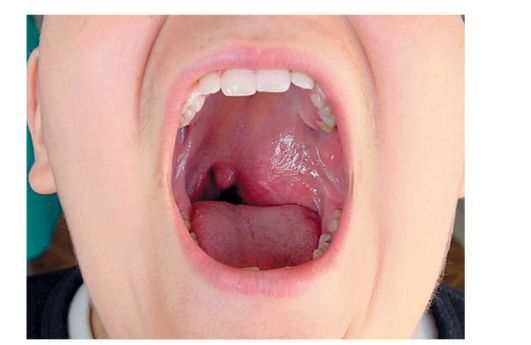
Symptoms of nasopharyngeal cancer are:
- Blurred vision or double vision.
- Speech disorders.
- Recurrent ear infections.
- Pain or feeling of numbness in the face.
- Headache.
- Hearing impairment, tinnitus.
- Swelling in the neck or nose.
- Nosebleeds.
- Nasal congestion.
- Sore throat.
For the treatment of nasopharyngeal cancer, surgical methods, chemotherapy and radiation therapy, and targeted therapy are used.
Hodgkin's lymphoma is a malignant tumor that affects the lymphatic system. The exact role of EBV in the development of this cancer is not fully understood. However, this virus is believed to be responsible for a fairly large number of cases of Hodgkin's lymphoma.
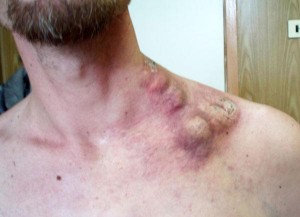
Symptoms of this disease include:
- Painless swollen lymph nodes in the neck, armpits, or groin.
- Increased body temperature and chills.
- Increased perspiration at night.
- Weight loss.
- Loss of appetite.
- Skin itching.
Used to treat Hodgkin's lymphoma:
- Chemotherapy.
- Radiation therapy.
- Immunotherapy.
- Intensive high-dose chemotherapy and bone marrow transplantation
Epstein-Barr virus and multiple sclerosis
Multiple sclerosis is a severe chronic inflammatory demyelinating disease of the central nervous system that causes progressive disability. Scientific evidence suggests that EBV is one of the etiological factors of this disease, although the mechanism of this influence is still unknown.
Multiple sclerosis has a very diverse clinical picture. The most common symptoms of this disease include:
- Fatigue.
- Vision problems.
- Feeling of numbness and tingling.
- Spasms, stiffness and muscle weakness.
- Movement problems.
- neuropathic pain.
- Problems with thinking and learning.
- Depression and anxiety.
- Sexual problems.
- Problems with bladder and large intestine.
- Speech and swallowing disorders.
Unfortunately, modern medicine cannot cure multiple sclerosis. Treatment of this disease depends on its clinical picture. It may include:
- Treatment of exacerbations of multiple sclerosis with corticosteroids.
- Treatment of specific symptoms of the disease.
- Treatment aimed at reducing the number of exacerbations.
With proper treatment of multiple sclerosis, the life expectancy of these patients is almost not shortened.
Despite more than fifty years of close study of the Epstein-Barr virus, its role in the development of many diseases remains not fully understood. Research in this scientific field continues all over the world. It is safe to say that scientists are waiting for many more interesting discoveries.
History of discovery and study of VEB
In March 1964, the results of a remarkable study by three scientists, Anthony Epstein, Yvonne Barr, and Bert Ashong, were published in the medical journal The Lancet. They discovered the first human cancer-causing virus, which was later named after two of them, the Epstein-Barr virus.
The history of the discovery of EBV and elucidation of its role in the development of cancer began with the work of surgeon Denis Burkitt. During the Second World War, he was sent to Africa, and after it ended, he worked in Uganda for several years.
1958 first report of a specific cancer
In 1958, Burkitt first reported on a specific type of cancer that was quite common among young children living in Central Africa. These aggressive tumors - later named Burkitt's lymphoma after him - were caused by an uncontrolled proliferation of white blood cells.
These children often presented to the hospital with dental problems or swelling of the face and neck. The tumors grew rapidly in size and unfortunately did not respond to any treatment available at the time.
VEB geographical location
Burkitt noticed that the disease had a strong geographic affinity - it was most common in rainy areas with year-round high temperatures. This strong association with environmental conditions, much like malaria, led Burkitt and his colleagues to believe that lymphoma was caused by a virus transmitted by insect bites. But they had no evidence for this theory.
Discovery of a carcinogenic virus in humans
On March 22, 1961, Burkitt visited England and gave a lecture at the London Medical School in which he described his discovery to other doctors and scientists. One of the listeners was a young doctor, Anthony Epstein, who was interested in laboratory diagnosis of diseases and was an expert in the use of a new instrument, the electron microscope.
Dr. Epstein also worked on the Rous sarcoma virus, which caused tumors in chickens, and understood how viruses can cause cancer. He was determined to be the first scientist to succeed in discovering a carcinogenic virus in humans, so Burkitt's theory that the new kind lymphoma may be related to the virus, very much interested him.
After the lecture, the scientists agreed to cooperate, tumor samples taken from children with Burkitt's lymphoma were delivered from Uganda to Dr. Epstein's laboratory.
For years, Dr. Epstein tried unsuccessfully to find the virus in samples. It is interesting that the discovery helped him bad weather. Due to fog, the plane carrying one of his samples was diverted to another airport. The longer journey and shaking caused some of the cells to be released.
Together with young scientist Yvonne Barr, Dr. Epstein was finally able to grow these free-floating cells for study. With the help of colleague Bert Aschong and an electron microscope, the scientists were able to see that some of the grown cells were filled with tiny viral particles.
This discovery was only the first step in a long and difficult road of VEB research. Dr. Epstein and his colleagues created a joint project to study the virus with the spouses Werner and Gertrud Henle. In 1965, it was possible to confirm that this is a completely new human virus, which was given the name Epstein-Barr virus.
But there were problems. It turned out that only 1% of cells from Burkitt's lymphoma were infected with EBV, and in some samples of this tumor, the virus could not be detected at all. This raised serious doubts that EBV is the cause of cancer.
Frightened, the Henle couple and their colleagues conducted further experiments. They found that infected B cells can transmit the virus to uninfected B cells, causing them to become cancerous.
Epstein Barr's first diagnosis
Eventually scientists got the evidence they needed when a blood test was created that could detect infected cells. All children with Burkitt's lymphoma were positive for EBV.
But scientists were shocked that 90% of adults living in America also tested positive, but none of them had Burkitt's lymphoma.
The answer to this question was found after one of the workers in Henle's laboratory fell ill with mononucleosis. Prior to that, her EBV test result was always negative, but after the illness, it became positive. Studies have confirmed that every case of mononucleosis is caused by EBV.
However, another important question remained - is EBV the cause of Burkitt's lymphoma, or was it the disease that created excellent conditions for the infection of the virus, and its presence is a mere coincidence? And why do only a small proportion of infected African children develop lymphoma?
To obtain definitive answers to these questions, scientists from France conducted a study in which thousands of children from Uganda took part. By 1972, this study enrolled 42,000 children who had blood samples taken to study when they were infected with EBV.
Over the next 5 years, some of the children developed Burkitt's lymphoma. They all had signs of an unusually severe EBV infection well before the tumors developed. This was strong evidence that EBV was involved in the development of Burkitt's lymphoma, but it was clear that other factors also played a role.
Everything finally fell into place in 1976, when Swedish scientists studied the chromosomes in cells from tumors of Burkitt's lymphoma. They noticed that the same chromosome was broken in the same place in all cells. It turned out that the breakaway piece of the chromosome contains the c-myc oncogene, which regulates cell division.
c-myc is tightly controlled, but in Burkitt's lymphoma cells it attaches itself to genes that are always active in white blood cells. This caused the c-myc to become constantly active as well, causing the white blood cells to keep multiplying.
EBV and other persistent viral infections cause B cells to divide rapidly over a sufficiently long period of time. This increases the risk of a genetic error associated with the c-myc oncogene. The combination of a genetic error and EBV greatly increases the risk of developing Burkitt's lymphoma.
But that's not all. Using molecular techniques, the scientists found that EBV infection is also strongly associated with nasopharyngeal cancer. As with Burkitt's lymphoma, other factors are also important, namely the combination of genes, nutrition, and EBV.
More recently, evidence has begun to emerge that EBV is also associated with a subset of gastric malignancies. A large scientific analysis conducted in 2009 concluded that approximately 10% of malignant tumors of the stomach contain EBV.
In addition to cancer, the virus Epstein Barr may play a role in the development of multiple sclerosis, erythema multiforme, genital ulcers, hairy leukoplakia of the mouth.
Based on materials
https://www.ncbi.nlm.nih.gov/pmc/articles/PMC3112034/
It was discovered in the sixties of the last century by the scientist M.E. Epstein and his assistant I. Barr during microscopic studies of cells of a malignant tumor, which later became known as Burkitt's lymphoma.
transmission path
Infected in childhood and adolescence. Although the features and its distribution have been studied for 40 years, they remain not fully elucidated. They are infected by an aerosol, transmissible way, and it can also be transmitted through contact with an infected person, through mother's milk and sexually (during oral sex).
Infection in childhood occurs through toys on which saliva remains in the carrier in a latent form. Among adults, the spread of a dangerous virus during kissing with saliva is characteristic. This method is considered very common and familiar.
Invading the salivary glands, thymus, cells of the mouth and nasopharynx, the Epstein-Barr virus begins to infect the human body. With a decrease in immunity, the latent one can go into an open form, causing a number of dangerous diseases.
Pathogenesis
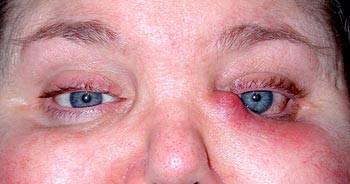
There are 4 stages in the pathogenesis:
At the first stage it penetrates into the oral cavity and nasopharynx, it enters the salivary ducts, into the nasopharynx, where it multiplies, infecting healthy cells.
At the second stage enters the lymph nodes through the lymphatic pathways, B-lymphocytes and dendritic cells are affected, causing their avalanche-like reproduction, which leads to swelling and enlargement of the lymph nodes.
Third stage- the central nervous system and lymphoid tissues are affected, along with them other important organs: the heart, lungs, etc.
Fourth stage characterized by the development of specific immunity against the virus, in which the following result is obtained:
- complete recovery;
- or the infection becomes chronic.
Two forms are known - typical and atypical. A typical one has all the symptoms characteristic of the disease, while an atypical one has only 2-3 symptoms (maybe even one). Atypical are identified on the basis of laboratory data.
According to the degree of severity, it occurs in mild, moderately severe and severe forms. In severe cases, the body temperature reaches its maximum, the febrile state lasts for a long time, the lymph nodes become greatly enlarged, as well as the spleen, and sometimes the liver.
Adenoiditis persists for a long time, the tonsils are very hyperemic, the tongue is lined, the level of leukocytes in the general blood test is higher than normal.
Diagnostics
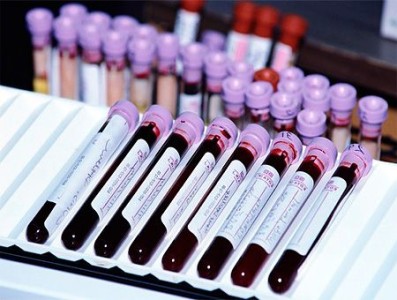
Diagnosis is carried out on the basis of patient complaints, according to manifestations primary symptoms and laboratory blood test data.
Important in the diagnosis are:
1. Indicators of the general blood test. After the introduction of the virus B - lymphocytes become infected, and their active reproduction begins. The process leads to an increase in their concentration in the blood. Such cells have received the scientific name "atypical mononuclear cells".
In infected patients, ESR, the number of leukocytes and lymphocytes are higher than normal. Platelets also increase or vice versa can be reduced, the same with hemoglobin indicators (anemia of a hemolytic or autoimmune nature is observed). When viewed under a microscope, doctors identify them.
2. To accurately determine the infection with the virus, blood is taken for tests to detect antibodies against antigens. When antigens enter the blood, they are recognized by the cells of the immune system.
3. In a biochemical analysis of blood taken from a vein on an empty stomach, protein is detected in the acute phase, elevated bilirubin indicates liver disease.
ALT, AST, LDH are special proteins found in the cells of the body. When an organ is damaged, they enter the bloodstream, and their increase indicates a disease of the liver, pancreas, or heart.
4. A consultation of narrow specialists is held with the involvement of an immunologist and an ENT specialist, an oncologist and a hematologist. The final conclusions are made on the basis of clinical studies with a blood test for coagulation, x-rays of the nasopharynx and chest, ultrasound of the abdominal organs.
Initial Epstein Barr virus symptoms indicating that the patient is infected
The incubation period of the acute form lasts about a week after the introduction. The patient begins to develop a picture similar to an acute respiratory illness.
These are the initial symptoms:
- the temperature rises to critical levels, the patient is shivering;
- sore throat, swollen tonsils can be seen plaque;
- on palpation, there is an increase in the lymph nodes under the jaw, on the neck, in the groin and armpits.
When analyzing blood, the appearance of atypical mononuclear cells is observed - young cells that are similar to lymphocytes and monocytes.
A person quickly gets tired, appetite and performance decrease. A papular rash can be seen on the body and hands. The activity of the gastrointestinal tract is disturbed. Patients can often find soreness in the muscles and joints. They often suffer from insomnia and chronic fatigue syndrome.
Related diseases
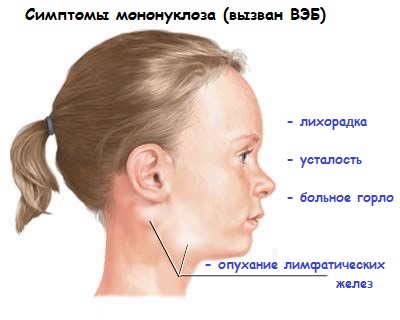 most dangerous disease, which can cause, is considered Filatov's disease, or it is also called infectious mononucleosis. The duration of the incubation period of this disease is usually about a week, but can last up to 2 months.
most dangerous disease, which can cause, is considered Filatov's disease, or it is also called infectious mononucleosis. The duration of the incubation period of this disease is usually about a week, but can last up to 2 months.
At the beginning, the patient begins to feel chills and malaise, joint and muscle pain, the throat swells up, the patient gets tired quickly, sleeps poorly.
The body temperature gradually rises and reaches critical - up to 40 degrees, the patient has a fever. The main defining symptom of a viral infection is polyadenopathy, which appears 5-6 days after the onset and is characterized by an increase in all lymph nodes. They become slightly painful during palpation.
Nausea and pain in the abdomen leads to vomiting. The skin remains unchanged, but sometimes there are herpetic eruptions. The palatine tonsils become inflamed, pus is separated from the back of the pharynx. Nasal breathing becomes difficult, accompanied by a nasal voice.
Later, the spleen enlarges (the phenomenon of splenomegaly), which returns to normal after 2-3 weeks. Accompanied by the appearance of a rash on the body, papules and spots, roseola points, as well as hemorrhages.
Sometimes there is mild jaundice with dark urine.
A person who has had infectious mononucleosis will no longer get sick, but will remain a carrier for life. The Epstein-Barr virus is dangerous for its complications: meningoencephalitis, serous meningitis, and there may also be a threat of encephalomyelitis.
Those infected with the Epstein-Barr virus can get sick with other diseases:
- lymphogranulomatosis;
- systemic hepatitis;
- lymphoma, including Burkitt's lymphoma;
- malignant tumors of the nasopharynx;
- neoplasms in the salivary glands, gastrointestinal system;
- herpetic lesions of the genitals and skin;
- hairy leukopenia; chronic fatigue syndrome;
- multiple sclerosis;
- proliferative syndrome, which develops in those who have acquired immunodeficiency or from birth.
With the development of infection, B-lymphocytes increase so much that the functioning of important internal organs is disrupted. Many children who have a congenital form of immunodeficiency die from this disease. Those that survive suffer from lymphoma, anemia, agranulocytosis, or hypergammaglobulinemia.
Treatment
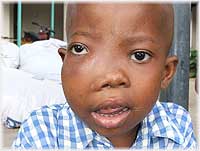 Boy Epstein Barr
Boy Epstein Barr The infection should be treated by a doctor specializing in infectious diseases, and if a tumor is detected in the form of neoplasms, an oncologist. Patients with severe infectious mononucleosis are subject to immediate hospitalization with the appointment of an appropriate diet and bed rest.
Active treatment begins with the use of drugs to stimulate phagocytes and natural killers, creating an antiviral state of healthy cells.
The effectiveness of such appointments has been proven:
- interferon preparations - alpha: acyclovir and arbidol, viveron, valtrex and isoprinosine;
- intramuscular injection of roferon and reaferon-EC;
- intravenous administration of immunoglobulins, such as pentaglobin and intraglobin, which also give a good result;
- immunomodulatory drugs: Derinat, Likopid and Leukinferon;
- biological stimulants (solcoseryl and actovegin).
An auxiliary role in the treatment is played by the complex intake of vitamins and antiallergic drugs, such as tavegil and suprastin.
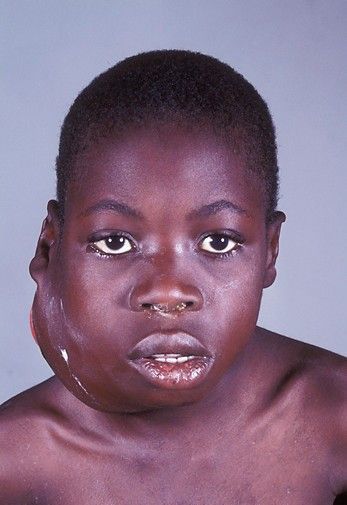
If purulent tonsillitis is detected, a course of antibiotics is prescribed for a week or 10 days (cefazolin or tetracycline).
With an increase in body temperature, antipyretic tablets of paracetamol are prescribed, and for coughing - tablets of mukaltin or libexin. With difficulty breathing through the nose, drops of naphthyzinum help.
Treatment of patients can be carried out on an outpatient basis, prescribing interferon-alpha under systematic laboratory control. After three to four months, blood must be donated for biochemical analysis for immunological examination and PCR diagnostics.
The treatment may take two to three weeks or several months, depending on the severity and complications, as well as its types (acute or chronic).
When a disease is detected, it is necessary to conduct an examination of the saliva of other family members in order to avoid re-infection with the infection.
Why is Epstein Barr dangerous?
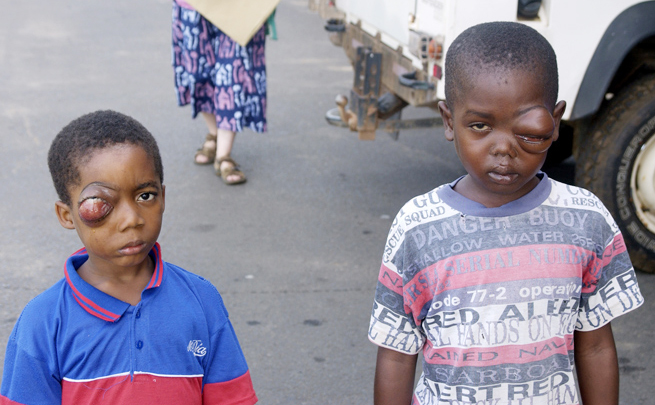 On the face
On the face Represents a serious danger with its complications. At the very beginning of the disease, in the very first weeks, it can lead to damage to the central nervous system. Often there are meningitis, psychosis and hemiplegia.
Sometimes the Epstein-Barr virus provokes autoimmune hemolytic anemia. Appearing pain in the abdomen, extending to the left shoulder, may indicate a rupture of the spleen. With severe swelling of the palatine tonsils, obstruction of the upper respiratory tract is sometimes observed.
Epstein Barr virus during pregnancy can cause intrauterine infection of the fetus and lead to the pathology of its important organs and lymph nodes.
Preventive measures against Epstein-Barr virus
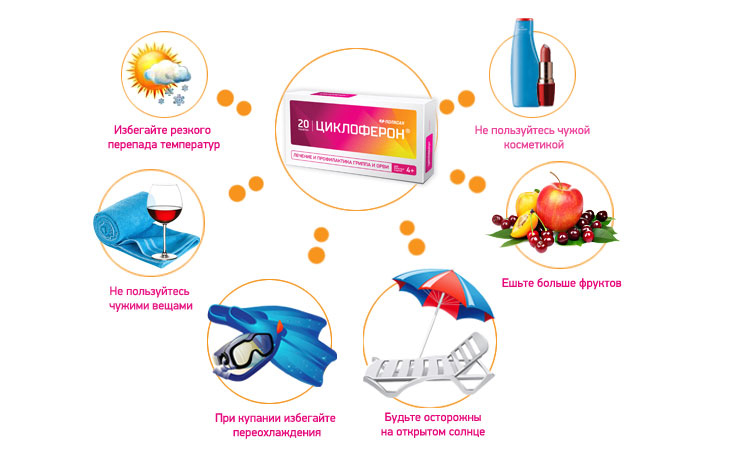
You should not be afraid of the virus, because it is impossible to avoid infection. Adults already have immunity, as they have antibodies to the Epstein-Barr virus that are developed after an illness in childhood.
If the child has a good immune system, he should not be too protected from infection. It has been noticed: the earlier children get sick with the Epstein-Barr virus, the weaker the course of the disease will be. Maybe they won't even feel it. And immunity will be developed for life in children who have been ill.
For those who have weak immunity, a special vaccine is currently being developed to protect the body from infection with this virus.
The most effective prevention is considered to be an increase in resistance caused by the Epstein Barr virus, strengthening the immune system.
Here are the mandatory preventive measures:
- Hardening from birth is recommended. Toddlers should be gradually accustomed to bathing in warm water with body temperature and walking in the fresh air, and the use of cold water for dousing throughout life will also help in hardening.
- Doing healthy lifestyle life, competently, scientifically correctly, it is necessary to draw up a balanced diet with the introduction of fresh vegetables and fruits. Vitamins and trace elements contained in them, special multivitamins should support the body at a high level.
- Avoid any somatic diseases that cause a weakening of the immune system.
- Psychological and physical stresses also negatively affect the state of the body and reduce immunity.
- We must live with the motto “movement is life”, spend a lot of time outdoors in any weather, engage in feasible sports: skiing in winter and swimming in summer.
Who said that curing herpes is difficult?
- Do you suffer from itching and burning in the places of rashes?
- The sight of blisters does not at all add to your self-confidence ...
- And somehow ashamed, especially if you suffer from genital herpes ...
- And for some reason, ointments and medicines recommended by doctors are not effective in your case ...
- In addition, constant relapses have already firmly entered your life ...
- And now you are ready to take advantage of any opportunity that will help you get rid of herpes!
Effective remedy from herpes exists. and find out how Elena Makarenko cured herself of genital herpes in 3 days!
One of the most common viruses on Earth, mistakenly referred to by many as the Einstein-Barr virus in children, is actually a virus of the group of causative agents of herpes infection type IV and is called the Epstein-Barr virus (hereinafter referred to as EBV), which infects at least half inhabitants of our planet.
The causative agent of the virus was discovered by British research professor Michael Epstein in 1964 together with Yvonne Barr, whose names he bears as a name.
Most often, children under the age of five are susceptible to infection, children with weakened immune systems are especially vulnerable. Infection can occur even in the womb, by airborne droplets or household routes, as well as by blood transfusion. The source is people - carriers of the virus.
Epstein-Barr virus symptoms in children
Children with strong immune systems endure infection with the virus like a mild cold or asymptomatic at all.
Symptoms of the primary infection of a child with a weakened immune system after a one and a half month incubation period are characterized by the following features:
- subfebrile long-term temperature;
- swelling of the lymph nodes of the neck;
- headache;
- disturbing sore throat;
- weakness and chronic fatigue;
- liver enlargement;
- unexplained rash on the hands and other parts of the body;
- some problems in the activity of the intestine;
- loss of appetite and noticeable weight loss;
- manifestations of herpes in the oral cavity;
- enlargement of the spleen;
- chills;
- debilitating pain and discomfort in the muscles;
- anxiety and sleep disturbance.
Over time, each symptom, while being a harbinger, can cause the corresponding diseases (tonsillitis, herpetic sore throat, lymphoma, infectious mononucleosis, exanthema, hepatitis, multiple sclerosis, pneumonia, and others).
The insidiousness of EBV is manifested in the complexity of its timely diagnosis, since it manifests itself in different ways and is often mistaken even by doctors for other diseases. Examinations (biochemistry, blood test, determination of antibody titer to the virus, DNA diagnostics, PCR, enzyme immunoassay, serological studies) give an accurate picture if the child has a type IV herpes virus in the body.
Epstein-Barr virus treatment in children
If you suspect a virus, you should not neglect the doctor's recommendations to undergo an examination, since EBV, having entered the body, spreads with the blood to all tissues and organs. It is very dangerous for children with congenital immunodeficiency, as many diseases provoked by the virus and their complications become deadly.
If the child has strong immunity, the disease goes away without consequences, and the child acquires immunity and relapse does not occur.
With an active, pronounced form of infection, universal and sufficient effective method treatment currently does not exist due to insufficient study of the virus, due to the variety of its manifestations. Children are treated in the infectious diseases department of the hospital, using antibiotics, antihistamines, detoxification drugs, antiviral agents. Such complex therapy is able to level the acute symptoms of the disease, and at the same time cure the accompanying diseases that have arisen. It is almost impossible to completely get rid of the EBV virus. The result of treatment may be the acquisition of immunity, but the person remains forever the carrier of the virus.
Apply and folk remedies, soothing and firming effect. These are decoctions of chamomile, oak bark, mint, ginseng, which are drunk in small concentrations as tea during the day.
A preventive measure is to strengthen the child's immunity from infancy. There are many ways to achieve results. These include hardening, taking vitamins, building resistance to stressful situations, activity and movement.
Einstein-Barr virus: causes, symptoms and treatment
September 20, 2013
The Epstein-Barr virus is one of the most widespread viruses on the planet today. According to various sources, antibodies indicating a meeting with him are found in 80-90% of adults, although the first contact, as a rule, occurs already in kindergarten. Once in the human body, the Einstein-Barr virus may not manifest itself in any way at all, or it may lead to infectious mononucleosis, chronic fatigue syndrome. Its danger also lies in the ability to provoke chronic processes in almost any organs, including the liver, kidneys, gastrointestinal tract, as well as the ability to cause lymphogranulomatosis, Burkitt's lymphoma, and nasopharyngeal cancer.
![]()
Complementing serious immune diseases(such as AIDS), the Einstein-Barr virus sometimes results in death. You can get it from an already infected person, in particular, through:
- saliva
- blood;
- household items;
- intimate contacts;
- air (airborne).
As mentioned earlier, carriers may not be aware for a long time that the Einstein-Barr virus is present in their blood. Symptoms are clearly manifested during the initial infection. Actually, then there is a disease called infectious mononucleosis. It is typical for him:
Such symptoms are also characteristic of angina, and therefore not always doctors can establish the correct diagnosis. After an acute period, a complete recovery is possible, which happens in isolated cases, passive carrying of the virus (without any signs) or chronic mononucleosis (active infection). In the latter case, the patient complains of:
- joint pain;
- sweating;
- constant fatigue;
- frequent infectious and fungal diseases;
- subfebrile condition;
- swollen lymph nodes;
- problems from the nervous system, in particular, dizziness, insomnia, impaired attention and memory, etc.
In order to identify the Einstein-Barr virus in children, you need to conduct a series of laboratory tests. So, first of all, you need to pass a general blood test. Carriers of the virus are characterized by an increase in lymphocytes. It is also necessary to conduct a study of the immune system, in particular, to establish the level of immunoglobulins. Information about the activity of the virus can be obtained through a blood test for antibodies. If they are found to the EBV IgM antigen, we can talk about the acute phase of the disease, that is, there is a primary infection or there is a chronic form of mononucleosis during an exacerbation. ![]()
Antibodies of the EBNA IgG class indicate a meeting with the virus in the past, or a chronic passive form. They remain in a person's blood for the rest of their lives, but are not an indication for treatment. To determine where the virus is contained (blood, urine, saliva), DNA diagnostics will help.
It is worth treating the Einstein-Barr virus when it is in an active form. First of all, the patient is prescribed interferon-alpha preparations. In addition, abnormal nucleotides are used in complex treatment. This may be ganciclovir, famciclovir or valaciclovir. A course of treatment with immunoglobulins is also offered. If the Einstein-Barr virus is in a passive state, then in drug treatment not necessary. Raise immunity and fight the virus will help folk remedies. So, a good antiviral and anti-inflammatory effect causes horseradish, garlic, as well as birch buds, rose hips, linden leaves, calendula, thyme, sage, coltsfoot.
Epstein-Barr virus in children. Symptoms, treatment
EBV - Epstein-Barr virus belongs to the group of causative agents of herpes infections. It is usually localized in B-lymphocytes and on the mucous epithelium of the upper respiratory tract. The spread of the virus is ubiquitous.
Epstein-Barr virus. sources of infection.
Infection with a viral infection most often occurs in the early childhood. That is why almost the entire adult population has antibodies to EBV.
The source of infection are patients with acute or chronic form of the disease. Young children most often contract this so-called “kissing disease” from their parents.
Symptoms of the disease caused by the Epstein-Barr virus in children
In children with normal immunity, the disease occurs in the form of a mild cold or without any pronounced symptoms at all.
However, with weakened immune system if infected with a virus, mononucleosis may develop. The incubation period of the disease lasts from four days to two weeks. Then there are sore throats, and the temperature rises to 38 - 40 degrees, which needs to be brought down, by the way, many do not know What Temperature Should the Child Bring Down? The lymph nodes are also greatly enlarged, especially in the neck. The disease proceeds with all the signs of a sore throat, skin rashes also occur. Diagnosis of mononucleosis is made by a clinical blood test if the leukocyte formula contains atypical cells - mononuclear cells. In infectious mononucleosis, the infection enters through the mucous membranes of the upper respiratory tract. In this case, swelling of the pharynx and labored breathing are noted. After the penetration of the Epstein-Barr virus into the blood, it spreads to all organs and tissues of the body.
With the penetration of EBV into B-lymphocytes, there is a proliferation of these cells. This is what provokes an increase in the palatine tonsils and the occurrence of systemic lymphopathy.
Tonsils are affected already in the first days of the disease. In this case, a picture of catarrhal tonsillitis or lacunar tonsillitis is observed. Plaques appear on the tonsils, which, after removal, do not cause bleeding. Sometimes sick children have an unpleasant putrid odor from the mouth.
Very often, infectious mononucleosis in children is characterized by hepatolienal syndrome. This results in hardening and enlargement of the liver and spleen.
In 5-7% of children, a rash occurs on the body during the course of the disease, but most often it is a consequence of taking antibiotic drugs of the aminopenicillin group. The rash is presented in the form of large and small papules, sometimes with a hemorrhagic component. Itching is absent. After the rash passes, pigmentation remains on the skin.
Complications caused by infectious mononucleosis in children are very rare. In this case, there are cases of rupture of the spleen, bleeding and severe stomach pain. The child needs urgent surgery.
Treatment of the disease caused by the Epstein-Barr virus in children.
Most often, the disease subsides within two to three months, without the need for specific treatment.
Treatment of the disease is prescribed in a complex manner, and it depends on the severity of the symptoms. First of all, symptomatic therapy is prescribed, including the use of interferon or viferon (candles).
In etiotropic therapy, acyclovir is used, which disrupts the synthesis of viral DNA.
In severe cases of infectious mononucleosis, glucocorticosteroids are prescribed. Antibiotics in the treatment of this disease are contraindicated. They are prescribed to children only in the case of a bacterial infection.
Immunocorrective therapy, as a little-studied tactic in the treatment of children suffering from infectious mononucleosis, is advisory nature because it has not yet been fully explored. At the same time, planned monitoring of the child's immunological parameters is recommended every three months during the year.
You may like:
Sources: http://www.fun4child.ru/8637-virus-eynshteyn-barra-u-detey-simptomy-i-trechenie.html, http://fb.ru/article/100145/virus-eynshteyna-barra- prichinyi-vozniknoveniya-simptomyi-i-lechenie, http://zhenskiy-sait.ru/zdorove/virus-epshtejna-barra-u-detej-simptomy-lechenie.html
Good afternoon, dear readers!
Viral diseases affect each of us, but children are especially sensitive to them. Science every year highlights more and more new viruses that constantly mutate and take on new forms.
One of the most common is the Epstein-Barr virus, the symptoms in children of which we will consider.
The word "herpes" Today is familiar to many. It is often associated with rashes on the lips. However, there are a lot of herpes viruses.
Some readers will sincerely ask the question: Epstein-Barr virus - what is it? After all, such a diagnosis from pediatricians and district police officers is almost never heard. Indeed, the asymptomatic nature of the disease does not allow it to be established in time, and it is mainly complications that have to be treated.
Epstein-Barr infection is also related to herpes.
This disease is also called a latent infection, since its symptoms often do not appear at all. It is transmitted by airborne droplets, but can also pass after a blood transfusion.
Against the background of a virus infection, a significant decrease in immunity occurs. In this regard, complications and secondary diseases develop:
- lymphoma;
- nasopharyngeal cancer;
- hepatitis;
- angina;
- sclerosis;
- chronic fatigue syndrome;
- damage to the skin and mucous membranes.
Epstein-Barr virus is today associated with cancer and often causes them.
The most common complication is infectious mononucleosis, which affects lymphoma and leads to oncology. The incubation period is from 2 to 15 days, on average a week.
Symptoms
Is it possible to determine the disease at home, because its symptoms have been erased? It is worth taking a closer look at a sick child. Some of the following symptoms may help you:
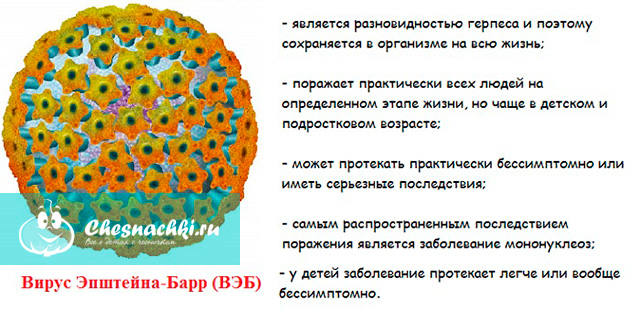
- temperature rise to 38-40 degrees (passes in waves):
- severe intoxication;
- weakness;
- headache;
- muscle pain;
- pain in the joints;
- angina;
- fast fatiguability;
- bad sleep;
- swollen lymph nodes;
- nausea;
- abdominal pain, diarrhea;
- sometimes - herpetic rash;
- leukopenia, thrombocytopenia.
When diagnosing, a virus test is necessarily done, for which a blood test is taken. If antibodies are present in it, then the child has an infection in the body. Only carefully collected data allow us to conclude that a virus is present in the body and should be treated.
Types of manifestation
Unfortunately, the statistics are disappointing. Almost 90% of the world's population are infected with this infection and are its carriers.
The Epstein-Barr virus can manifest itself in different ways, so it can only be detected with the help of special tests:
- primary infection - in most cases it is asymptomatic, immunity is acquired for a long time. But if the patient has weak immunity, there is a risk of developing mononucleosis;
- chronic form - the symptoms are erased, so it is very difficult to diagnose the disease;
- generalized chronic form - affects the kidneys, central nervous system, myocardium;
- an erased form of secondary immunodeficiency;
- oncological manifestations;
- autoimmune diseases.
Clinical manifestations are expressed in three forms:
- asymptomatic form;
- respiratory syndrome;
- mononucleosis.
Unfortunately, the disease can be cured only at an early stage, until it has passed into more severe forms. But since most of the planet is infected with the infection, it remains only to talk about the formation of a strong immunity to the virus.
How to treat?
Treatment includes a whole range of activities:
- antiherpetic drugs;
- interferons;
- etiotropic drugs (Acyclovir, Foscarnet, Valaciclovir), Groprinosin (the effectiveness of any antiviral drugs has not yet been proven, studies have shown that after the use of these drugs, the number of patients almost did not decrease);
- immunoglobulins;
- antibiotics (according to indications, if a secondary infection joins);
- vitamin and mineral complexes;
- hepatoprotectors (drugs that thin the blood);
- antipyretic;
- antihistamines (for allergies).
One of the leading drugs in the treatment remains inosine pranobex (Groprinosin). It inhibits the synthesis of viral proteins. It slows down the synthesis of viral RNA. As a result, the infection cannot multiply.
The second most important drug in the treatment is an analogue of human interferon. It further inhibits reproduction and destroys the RNA template.
Therapy also imposes some restrictions on the child's lifestyle. A sparing diet is prescribed, due to a possible enlargement of the spleen, such children should not go in for sports, severe physical exercise as the spleen may rupture. In the acute course of the disease, bed rest should be observed.
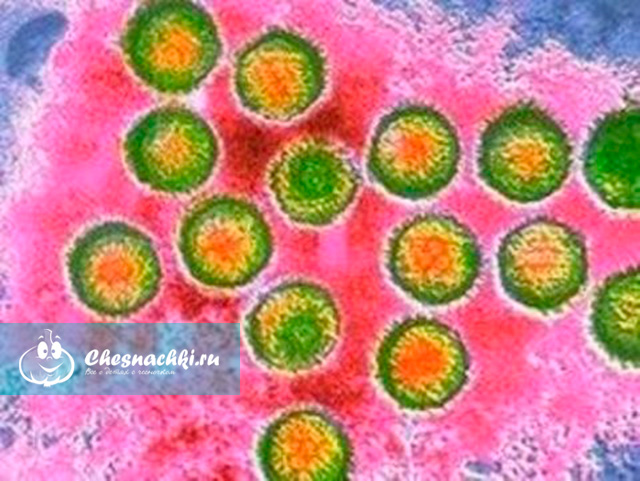
Unfortunately, the effectiveness of the treatment has not been definitively proven. Doctors are desperately arguing about the action of interferon and its benefits for the body.
There is an opinion that the introduction of artificial interferon only prevents the body from fighting the infection on its own, because, receiving help from outside, our body begins to be lazy and does not produce its own interferon. As a result, immunity falls, and treatment requires new doses of interferon from the outside.
On the other hand, if the child has an acute course of the disease, sit and wait "until it passes by itself", neither the parents nor the doctor are able to. In spite of side effects drugs, they are prescribed, and some positive results are recorded.
Unfortunately, parents are not able to completely protect their child from infection. It remains to strengthen the immune system so that the baby suffers the disease asymptomatically and develops antibodies to it.
Until we meet again, friends!


